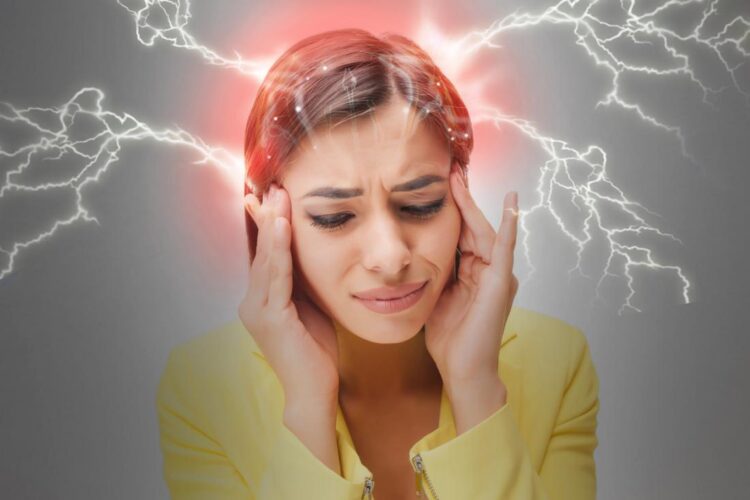You may be wondering: What is a migraine? Migraines are a condition that affects the brain, causing a variety of symptoms. This health concern often comes with or without a warning sign, which can include aura. An aura is a term used to describe the collection of symptoms that precede a migraine. The symptoms are sometimes mistaken for those of other illnesses, and the issue is not diagnosed.
In this context, education on migraine and headaches is essential for people suffering from these conditions. It can help them to understand their situation, find effective treatments, and cope with the symptoms. Many different resources are available, including books, websites, and support groups. Such an education is a valuable tool for people who want to take control of their condition and improve their quality of life.
If you are suffering from chronic migraines, there are several reliable virtual headache symptom checker tools that can help identify the underlying issue, give proper guidance, and recommend specific common treatments for facial pain. Read below to better understand this health concern, its symptoms, causes, and possible treatments.
Understanding Chronic Migraine

Chronic migraine is a condition in which a person experiences severe headaches at least 15 days a month for at least three months. It is more than just a headache. It can be debilitating. It can cause extreme pain, nausea, vomiting, and sensitivity to light, sound, and sometimes smell. It affects 15 million American adults. People who experience such medical disorders are at an increased risk of suicide, according to the American Academy of Neurology.
Symptoms
Migraine is a common condition that causes severe headaches and other symptoms. One of the most common symptoms is a pulsing or throbbing headache that is typically worse on a single side of the head. Other symptoms can include nausea, vomiting, sensitivity to light and sound, and pain that gets worse with physical activity. Some people also experience an aura, which is a visual or other disturbance that occurs before or during a migraine.
However, there are circumstances when people confuse its symptoms with that other health issues and overlook this condition. Hence, it is essential to have proper migraine and headache education to prevent any future complications that may hamper your social and personal life. You can also get help from trusted virtual symptom checker tools to determine if you are suffering from this health disorder. This will help you to seek immediate treatment. Such tools also help to analyze the symptoms of all sorts of primary and secondary migraine and facial pain disorders.
Causes

Chronic migraine is a neurological disease. It is characterized by attacks of headaches accompanied by nausea, vomiting, light sensitivity, or pain in the head. These attacks can occur from several times a month to several times a week and can last for 4 to 72 hours. Migraines can be divided into three types: hormonal (which may be a symptom of more severe disease), stress-related, and chronic migraines. Of these, chronic migraine is the most common. They are more challenging to diagnose than other types of migraines. The exact reason behind these migraines is unknown. It is believed to be due to several environmental and genetic factors.
The other possible factors that are responsible for such medical disorders include obesity, anxiety and depression, past events, and irregular sleep cycle. Also, if you are high in caffeine intake, you may be at a potential risk of developing migraine issues. It is advised to improve your sleep patterns and take your meals timely.
Treatments
Chronic migraines may be one of the most painful conditions to live with. These headaches can last for days and cause vomiting and extreme sensitivity to light and sound. Chronic migraines are debilitating and can make it difficult to function in daily life. A migraine is a very severe condition that needs prompt treatment. It is essential to treat this health concern because it can increase the chance of heart attack, stroke, and death. These are different from other types of headaches because they last longer than three days and have no known cause.
The main reason why people suffer from chronic headaches is that they do not know how to treat them. Chronic headaches are continuous headaches that you constantly suffer from. It is different from acute headaches that only last for a few hours and then go away. Several things, such as lack of sleep, stress, dehydration, low blood sugar, allergies, etc can cause this pain. The most common cause of chronic headaches is stress.
Chronic migraine is a very painful condition that affects millions of people all over the world. The cause of this condition is not entirely understood, but some factors may increase your risk of chronic migraines. Treatments for chronic migraine vary from lifestyle changes to chronic pain medications. Chronic migraines can be debilitating, and some people cannot work or participate in social activities. However, some people can live with chronic migraine with little to no issues.
How Can Virtual Symptom Checker Tools Assist You?

There are many benefits to using migraine symptom checker tools. These tools can help you to determine your triggers, track your symptoms, and find the best treatments for your migraines. They can also help you to communicate with your doctor about your condition. Migraine symptom checker tools can be beneficial for people who suffer from migraines.
Conclusion
The cause of your headaches is the result of the interplay between the many factors that influence the health of your head and neck. Some of these factors, like heredity and age, you can’t control. But others, such as lifestyle and diet, you can. The goal of your doctor is to identify the cause of your headaches and treat them, often with medication. If you have chronic migraine, you need to work with your doctor to find a treatment plan that works for you. However, in case you are unable to identify your condition, you can take help from virtual symptom checker tools to find out the possible symptoms.
 Hi Boox Popular Magazine 2024
Hi Boox Popular Magazine 2024



